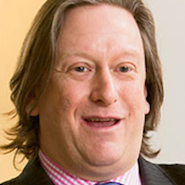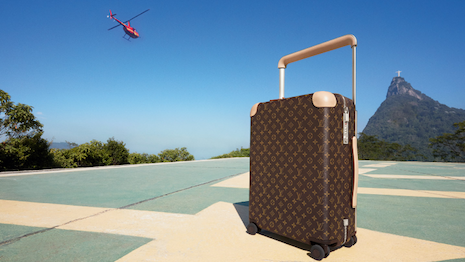By Doug Gollan
NEW YORK – Acquisition of new ultra-high-net-worth (UHNW) consumers will be key to building sales for luxury brands as they adapt to the new normal of annual growth in the 3-5 percent range, down from 8-10 percent during the halcyon days of the past.
The fastest-growing demographic for buying luxury is at the top of the pyramid, according to a presentation by The Boston Consulting Group held last month for Luxury Marketing Council members held in New York.
Households with a net worth of $20 million or more are expected to increase purchases of luxury goods and services by a whopping 80 percent by 2022.
At the same time, aspirational consumers, defined as having a net worth of less than $5 million, will only grow buying by 4 percent per annum in that same period.
“The top of the pyramid will be the driver of luxury growth over the next five years as aspirational consumers take a back seat and marketers come to understand there’s no new China,” BCG managing director Robbin Mitchell told the audience of marketers.
Over-investment in current customers
To increase sales, brands will have to look for new super-rich clients.
Ms. Mitchell said during the past five years brands over-invested in existing customers at the expense of spending to acquire new UHNW customers.
“After 2008, a lot of luxury retailers focused on the top of their files [of big spending customers],” Ms. Mitchell said.
That tack by luxury marketers had some reasoning behind it.
“They tried to expand share under the logic that they had behavioral history, and there was a higher ROI,” said Christine Barton, senior partner at BCG.
“They underinvested in acquiring new [UHNW] customers [allowing the newly minted super rich to] leak into accessible luxury,” she said. “You can get into a place where you are investing too much into current customers.”
Ms. Barton said that “the rich are the ones who are going to be buying more, and they are going to be driving a disproportionate share.”
At all levels of wealth, brands are faced with “demand for experiences and personalization,” she said, and even selling to the super rich, “omnichannel pathways are preferred.”
Luxury spending by sector
While consumers want instant gratification such as same-day delivery, they are willing to wait for personalized products.
The personal and experiential luxury market is currently valued at $930 billion.
Personal luxury, which includes accessories, apparel, watches and jewelry, perfume and cosmetics accounts for $355 billion in purchases.
Experiential luxury, which covers furniture, food and wide and vacations is $574 billion.
Cars and yachts account for an additional $445 billion in spending, while technology, arts and other luxury purchases add $321 million in spending.
In terms of personal luxury, watches and jewelry account for $141 billion in annual global spending, according to BCG.
Accessories are $85 billion and apparel $77 billion, followed by perfume and cosmetics at $51 billion.
Luxury hotels and vacations account for $439 billion in experiential spending, with food and wine at $76 billion and furniture at $59 billion.
While demand in emerging markets accounted for 35 percent of growth in the past decade, BCG estimates it will only be 10 percent in the next 10 years.
Overall, the share of sales to the top of the pyramid will increase from 29 percent today to 32 percent and $402 billion across personal and experiential luxury.
AMONG THE OTHER important takeaways, six in 10 luxury purchases are now digitally influenced, and word of mouth has supplanted traditional magazines in influencing luxury purchases, mainly through blogs, social media and digital.
The BCG consultants said luxury marketers have to do a better job of understanding the customer journey.
For example, UHNW consumers are now more global. But many luxury brands are still structured with most marketing done at a country level.
“They need to adapt,” Ms. Mitchell said.
As marketing focus goes online, it raises a key question.
“Are you measuring the right metrics for digital? What are the KPIs?” Ms. Mitchell said. “Measuring ROI is not particularly clear.”
 Doug Gollan
Doug Gollan
Doug Gollan is an expert on ultra-high-net-worth consumers. Over 30 years he has held senior positions in editorial, sales and management at business-to-consumer and business-to-business media companies focused across travel, luxury, automotive, spirits, fashion and financial services. A cofounder of Elite Traveler in 2001, since departing in 2014 he has launched DG Amazing Experiences, which is a weekly CEO-style e-newsletter focused on travel and lifestyle. Reach him at [email protected].
{"ct":"2fBXrTBvrO6eaj+quUQmavY\/NTj4YSyUtYoOCU5keSJYNvSivxx0CrrqW+WwAVgOQk8hJngPdpTnBm9py4YUIfZiCE\/GEmB0CTKerKk37Rjv21f0Kco0yEbY5T3CQxQUY+p4P9B77gUPdxNNwHgq5nvH6TVOtmznoqX748c5UNQRUDI0PX0XhmirqVC4ZctiP7pwEZ3KUAQzENWMieaBDxt2pxJp3VRlAnUlX9D68VuMMra860g7jnzF2\/WNDuU+zO+zh\/s69MiMCCqIo\/U2xZx36vfQFR2Q5Lhld1A5J76KIt+D3f19m2ibv2stsi7+zLzxCcRUEDOeGFTwRukCUNzCzxx9al4Ni2Um1vEQ5iYd1zSf7Fl67XYkJV04vuF4iNdYmbpkI9\/pt0eBnii\/URMnwae4zY56gOcjalhbAW144KOjxFWebYK422flKu8UH+VwuuKKphBDy0Kr9pZB+fu0Sj6txiwT9uCkQuaPFLyhLM+hUE+llScj+MfITVQZHC+dYwmzCS+zNWdF+V4EPS0Ve3zEq02yVqdmnt7rxE30s9C1ZSZMQzXeIcvhbWrvdrY2VL+K5gdWY0Q\/Dlr2MntibTmRX4Chpbj+S4AFLmm+ZnF0klpb5jf1Y+oZO4qxixSWkQt8Iu4SIbnoDzQ0Tax8\/lEf6QRuLkyFngkKy+nehQFov4UxQ2YSsAy+\/J\/QcEAaNl1+AxFmTKT5QWEoDZz0Cef\/L7bOi85K83HydDKdAvyv87NBKD99gL4UalW240gNXjozBKyt1LwsPQLGfwbo5aLFqsTsoVUNAnCTm70xCZh3gGA0YIUunfbXYxShaEtNDafUK2oocV3X0eGgMH+Y8yF0\/vgjo90J6SlR3lHUN3Q5hX895jpgiHsTgS4cAqDCYotD+7J8pLJ7Ub0ptrjX74lHz5MWLeYqOaKBM03ICKZEaOTBOt8mevL+irTyUjX7ZIkX5GSr655gelM1bgjelZvrOuvXbO91tCUWHo34GL1zJs4SMvQj938H9jN5r1eb32cE5ypA7ZQs065I5DZ7hzfKQc3TKOJhGn5fhmaHhgr3jvV4DpjedYrwz+hvnSEBExUB3q8iC3k9A7GM\/JhrZRlv4mZehTHZjVP8dr8wvzq8wGsAQrwy51oU3qmmsZY8I2sZLqXVmEtb7Qhy6NrlJa4W8IeHQgI\/uWk5Nmw+Oa8\/nfG61c5tbgO+XGTnx8Ogb5KY\/Q6DebLSjHDnj1Hx+5Ov9rOEADWakmXtPudKhMQr+VOVllRklGR3Ezpzf7HR1w17l7GqNd2uC8i+eZxaAN9ZRufiO5iOtrc7ymhSqI8DIXyISri+48QKyqpNLdk\/ECfbc6TLv5hj0PWJ1NQyoBlr51qaALK++NB7B2r\/E7NBZ3SOwCgy726DxhvcBvbYxFFvhaO6Zs40jlkp8KdQfqztHSlLyq80IEAstsuJesYi3ne8gl2EfHqO98XORAAwODSDD0iQihdcEEdAqPNbX+rwosIXZs6Jy7k\/NIOJvMG56UwRtN+HwXcxBsSMUfXoRe6BzZ7TCRgemTW+CnFvT4kcAPoEIkgUa+ggyWT7BF6nDdW1t4\/wtx9Tp75SYYqKcAgU3ODa+n4mMDcl7MuRNeYhF9ute+CJ9WBUnTWu8yy6NyK5zmvdVoMaTs7w5vlpgSfzQE7r7SmrLiZkrvTpRVpdzoUwJ1SUIcw1qWK\/qutbhH0G7r\/TYzyMrNX4JV0NLkh3XMw+ZvAkaIx2VLpDmCtDKHTnBzkN9qXjhsxF9D5eEkVxnbi+iecbAJgngdOAeruoQqVdEE8Pd8g9gmXzPPg8R\/8+MKmOKGY\/ugdTk0ammUt4uBLJZSgZwCUapA881H9+PN5k5fKilDUdK8dmHsn1Nf1Xt7WgA\/U24gFVjlk+6U1QoVu3VOXUNX37RfPfaLoRWPxi84qJuANsb16yVn7e7xucDDyU7SF7eCB+mEchRfZZcjitHcy0S20HMKKLA\/jR0lU4ttMZi21SgdGFRttwmF5a8BqDbhxwazbuS8WYkCs3hc+SDBrXATYUYROfNwfywxnrfkHlNOJbxXjQOh9SiYCXpbRuqfxAEB7ESJojnWxu6NWHZpNfSrATgz49dAuoQ2iJZwZOmpQ6+pubCe\/rOWLjZ0lxhDSbDSpJEpbrqCtqpnnqec7HwV6Zgt5578aAJaIDJgvfm04LIAwCv+thujApiNAtMVdAtfh9YoyEKTN1sw71nwdVGQE3e9DoSdbRvGVgSygI9FGPcAoT2OCPKl94sV\/WqrTFHTQ5l3J27G+G4INWzt7Ch5d0rY2q0p2U7jsoXnERYsW\/cZWlIfzSyJqA+gEd2AWuu6Pm2Jddo2ed4hM4dwvdP\/5CmBt\/MfSr\/s9AaNye\/zsQaoLiJfN0XOdm\/azwSJu9jq2L2m4auIbjJyM1JU+RgO8Z\/Rg1J7GdhAcCFF+BJOftYDjVGUBW998KFL6xQFSaN\/HJlF2iOZe814F9\/IPQy2dhngsg8ZOjbTyLcwYCYs91NZD5TjSBLead+VTWH9REy1S+ijXOEHOXIZJp64EUd5eL8V2iYoSOao4E0dg7xy8lL+z\/5qQ++sdl+nduydpQTwzGo5X4NKrhne1D2rg3esbNmBBLtjBCZDHrjBXKO9erZV8QIxfnOSTvr5w3lJBLNzFr0vy\/oUGX3qIZHj5JsPgmd1rDRufo0zUvPEd\/9kloXE4eUXCPtA4y5OsFiOhoFuuczwY9\/+A4T3vaCpuDnJDtWHyJ27pVUYf8lQbgdWOwJNgYg+wOh6ki3Qyo5uUcAGPUiap5n658oubBxISk7ddfw30hU++vXT8yR9mb89GZOTVVxwl\/5+U30aQ4EZIgt64GKAScqRN1Yqo1wmk20W62gh27w+7AVQ3YZK0QIWpSPTSRAARjL7kVauY+GX7077PKOpvjng3oPNUesr56D5PnDDtwS6dZXFn3AuDshHiHjhfgQRR573W5HSQngxHOqXtYZEWW+z68VkC\/A0juyW+N8H3BXXqbxhDXyt7tbeLRRdTWdnp2HNqln66qY3UBTkBVCLYP01mddM5stRQXf9ffi\/QQr6YXQs2nXjXdnsmjnbPKsVTbbJV2sLD7m4IpbUHmpxxsVd\/HmR69hKEDnYZSFkGX5l3DnTSNjiL3N1l4x+x1BBueYEe1omgQ8iraxCalhm1LSrhXeMgqSrmFnM6heHLJhtgAAxbT2YsmnxijiprsfRc2iSnG5w\/sgYf93ocTxhGlNNSHkKTuh0aM+u8JkgNPtLu5AWS9kM7gottxB9pBH\/X7uQiaBmCpONCluutzpfa3aG9\/JiHtbxKDhvMZf58bOimPn9CD7XWyq3Z\/0xXp0ZMlm9cf6dX+MXf8Sqb9tPxN7d1oIVqa7xEIFKzunQp1RD38Yc\/NWjOoXBB1QWNprQTPpfa5gIZLBvXb+keua8hNI9DsddXpz690iY8ZVUELwsWUhHal4waWrXh87tejpFGZzXgxJG0QANLnalUK\/Moo3djxRrU+Zlul6quRg0KdXV97PnbcPvGIYcKQuDyeoA+NfJEJ6KBkLgBZUlw4vidLXKREmecqFVrExapHtgLfeJ2DbgqLUY4t\/CmAfDwBO8Gg8xamQBDdEzbkc2OtNO6CnhLmuqPQzI1RFtP\/ft32CAN7S9ddaDyfKBsW2DdzqZxcBhVM2kLjASX2gQj3CRg633NT62Zk76oOI1N+HX3czcm7Mu6j0cS\/LJ6nzlGwy0fUvdFSB3qdXP1XHq+vhh1E+lP4Y7+SGwF3c8TykRcFlnK7YHORL\/G+lVvuWUQ8APgjUrN\/gStaNaJpinrBQVcJTA29bFsSuzScEjylEkYHppSQfZ9X1ZekJJ9\/YXpRTCnMY2otRpSY5Z9CMpAd6eaMdOCOGjjbipAu5YrtA7xvsVtmQoVgu85khcJqRx\/G8sRtZPPf7MQXhmV2Z3o4tcr1wroFKF2Z76jCkVmZngduoPmC2u5\/FDbn4dtZoWUK\/rE7ctMKyxm4mXDHWcmT0Z08TD5l5CvcdazHvIlz5t0aqvuJcx+gCVpyvMuyOItQ7UBEy3sSuqUZto2bUakvl8YkBIjHmF1o7Gq64pz0oN1JOxIzCAQGdFWnhpO5q7OvZq1B2DhtM+PxuxRlpY5aNtHBoOTXIZAcSUV7emYdShQNSWBqD33gHGGHC3gUoJ3Np6+7Shd9e6eRczFBvt0nNkcI6PlRGCw7IXZVYS1rEGWIYmJU9aqwmxJ\/gr26RKBowhVcEDfm\/hTzQMg7JPW0BeczAyadJwS3Qz5YuqZJUHDd8YBHP+NZyInkLLM1GI2lmU8nojK7j7GGhP+G25G3VW\/Zhf3uXGOt\/FzFSl9w8hoc4ezFVh2ibIT37ioS6jD1J6cxXrMV+9Mv70UNonTL\/u5f63xQsrH68hCZ1pRUaDqV4cDfVPq4FWaqUgSpvh+E\/+o+DRKX94Auw3Ei8AmZQnog2muth+xkAsHxj3qzBEZxDlrcVQQKwQMCz11tpDFBNDMJEmLXnosyxKWeZKvI4HW2l0LaSyL7itM9Xl6VFmsRI4PdVJ7Vr3RhanvL4xNYRB3RCAXKY54wbE40vxOW90zxqE7spGgIcygL\/RAAhtsy3s9jzDyOORsgAaJFkcfUgjA2Vlj3mfOqB7\/ojl88Yaz4hVEMNKtHqUyfv3mmnIS0xUPCz85tDvWDXCzpHJy0Ho0OYx5mXSVhZX+6NQLiLpdW8xK4b6p\/x+TjlHyylOEGiuKyWT\/ha5HhPJ3VJFSna\/X\/msq+Svd0fdB22aP9WFyQqj2ps1oEzH4TIQNx6C2OmR8CBPgiXzWwqTSSiBq39duI64M3ApGXQiTPwl95Ong6dbo9GErReXMdmePqHXlScZYOkzx4VOvX6ss8\/2gzOffPo49moy6dd7pPEDPBypBh7CBJF8tK0Mrd1YjSoQJ9QLkFDxwSN50CMN7DQ2UVXAiM8cO3bmiShxsX5ffJ00R+nBi6gCLZ4c7emxeiq1aAJ8yRNcccCKAFJUMMGP3hikcaNmXK+V\/lPN+Ebptmwsx6wB++xS7hJvaKS3s4FZrc+GMyPeUaIgmotABeHvJIQjAzAF3P5mDf4hpqtjZzQbVIyo\/QED1IekAeCjfaIpfxbraQ++oVRn8xqw\/SNwS1\/ADdFmdVBHZTcDBD7LNn7po3GrYyv5AXM3sotzStgJOJih+0ONDa8J3q1O2RshIOgsXKxk5Io3v6+umXC1sqqAYATOKZm0i0PQEIjaZhnFpM4zz0CAKg5kvUrqge3MX5j+urh+le1dUJ\/dIO2qWJyxi8y+d47\/5HQGPoqP9PiaGxwOIig\/2yvVVNOiBTLErCs85cw8BRmaBrtREBdxaG3NLxxi2WDNBIurF4g0HdQwhUlItY4\/cRz\/XQCdSLn0ohn1IOBYg8IygGoLV0zK9dn0mjQfySxcW2KB3N637Tec5jxg0qADD5CuvsPqHwiLjjnFJ+dlcrrYPqDnEeEHaeAWI6HJle0Z1pqdYTTTG4Rysd3DsYsh1RVj0g9uPGs03GWLuQQ\/Z3D3z10WAwpJ54avx+lSPWSvv6acEH7UVxNNu\/E\/c50Tw\/iRqMdmmpUmj+PJyL7cXRAMhPKejaeaatp\/0gViljifWtXRQd2absUBuMtmdQK00NPLuucYEPxxWFk3RVwzZjgCW4re411bsEN2apBskJnuj1CMkG+W7GEZJTGqhJuZFEZSwM8R4PS6EOwXgwzqj36srXqNpgZp8E4+MNkt+\/wDLE5opZaDf4+VaIqar8jHbESd5LNS7Znx+S46TS3\/pXqi8h\/kdjC+pHohGSE+CSGu5Xqx5BmlGQvm6F4RXOs24ZlB43TA2o8+AB1ua5PmzPLgTDU0hO85H+KI70sBxAeDMEPLd7o4WDzOtG+IKEO\/JqfKkW6uQIEg+aa+yWiumwHn1XsM0xw+CA9TK9ncoPzrjiGJ2R\/rZhANqq+3l8mn\/ATJssZ+2NfzivWC3gVncQFzsbq4y6t8fJM2UkgJXnj3ycMA+bbC82caXyqvwMEkVPMr8i44sFmwota\/nYg0M\/RBjFCtDTUbIEzhD+q3Rfv81N6ZBCdJFOIV33v5pfjqdibQ7nXe63hLaTZ\/yPfPf+z5BfLM\/6OnLwLhZPhXwpxYu\/CyDg6h7KwLNQhaN\/BMdExHDHmzHDvS0QqNPjMs1dcbhNtfDbzGHDtsV2v9DlsQMX0GCMVDWrvA9P5ukW2Ly1zUJQf8XlPRKnrUMg2\/U\/+W6faHjCB0wdB8Qz15VSC+G2hF+BogT1wcW0+BuKwyXeIXLQKPAOXLBEzAeHMkqEDkDM1vuHzKAEKKyhTtRVU5nsCHC+LO3ykUY+atqfxrmh\/QuSiMnA6VHYMVuFMAEqR06RLWeeN+r85sSXzmvZ3CSIXAu2EY29+h8hESLPR+Np\/baxMVWYDkfBPqmYHa\/wN9ObuIro8ExCQ2tNIOxfjCsjjRUmMVQ6CP8Is9G8ACXLd3lX9qucPV9NFSQe\/GHkmYOS60KLNgd\/o4HpQe3AtTlhK8aOwkjiWLzzxeIak4IDngO0gil9DZLrjYXDkVegAQpS5lnY+H+W+kJmDopQtWeJRnfbK24BsINkTnFuUHfLyXUM8Eugk7srUOmFa1hTChSMfS+foOCeTc2OqaadZ+WGr5t2q2VchmQw8a7o9MKI7Sy+oZx11ouVkPUQE5cBOrY+ziBhwUt8KM3F5J5d5tU+pSZ4GRnxGXQvZmsDSpa9Mv3+HK7BQXiJtCYcPP3AORpUwb6sv0wq3au86MeaRmix5R55e2XHuzTRhGIRz9nOIrGtlNRkA2XTvWVtOGhwFtzbKlcqyKyeRd\/bjWtYuwsWk7ce05w6tUytcz34GI\/DqCuPYRmYz9R0xWkt9GFmIniv9KFdZD8Q\/J+QKVnz+K0z8sMHQEHCnnm9FGx\/fY2ZTsymd+WyXfegDpfsNhBEG4JgpO0S2iXnRmF\/oh8AOwKXU2o36pALML2d3P9cHpWS+Pc8Jnq+OBnp4oO\/ohhUpZ69QOgzkTpHpLnfISqQ3A9DoW+HlOBb6UyIn7GRkMeImQELtZlf6DOumNZR71s1Ee\/KrgJUgtQpVo7E4Sw6CDrqkA52Nymhdu5O+5UfkGV1cIoABtkvv9pFZxEo9iCUZwzQQqTAmCKDFwdVqc9Lg1ypdcyO+Ph1pxFZwjZSzJ96lySVb6MJejcUwRuc\/JYOeIcOCN+6j1zonJ+efrZy0VpUuwu+FIvdNBumoicl1vBWisslcV7jVJLpmlibVExRnQiYwX3XSOaixzM2+cSwFyi1+JUdfgFWSdpJUEMbEEvxDI88vSZTQ9yezk+\/60CK2YCsi9CWkQvYE4JWlQsPLpnFrXceBXlZrlcJ17Kxr5E7SXeBcpL41h3Aw1LbFU5IleLS73iEL6iUr4jR+un9h0NZCraKHPPvaXXiQ5jkEsuYJqpaNS1ERZixLqJdWLJRa1cXKW3aIGGpM+zoyfoLREAPN8fbXOWThioiH1Fc6O3\/EUJtaN73VsPYERyS2RmXo32xJzzeh9KLxM8uXm0lRQDhhoJowIgWhBNVsERRnGh3n7QV9wyu\/YCpSKEarPfK8Guxsev0KNL3AsE314cwWaRdEBW1ySZYDHhaqDDjTUyTeZqlZSuBC6eTX9g+KIKK3gmf4+jsmOPUJqKyInUvU\/DXambRAxG\/zY7N9Ra41fyDFJSijvmnrA==","iv":"4d400016cf82c98e4cfd63303472dad0","s":"6137242debc98d9e"}

 Louis Vuitton has a handle on the market. Image courtesy of Louis Vuitton. Credits: Landowski Paul, Le Christ Rédempteur © Adagp, Paris, 2016
Louis Vuitton has a handle on the market. Image courtesy of Louis Vuitton. Credits: Landowski Paul, Le Christ Rédempteur © Adagp, Paris, 2016
 Doug Gollan
Doug Gollan